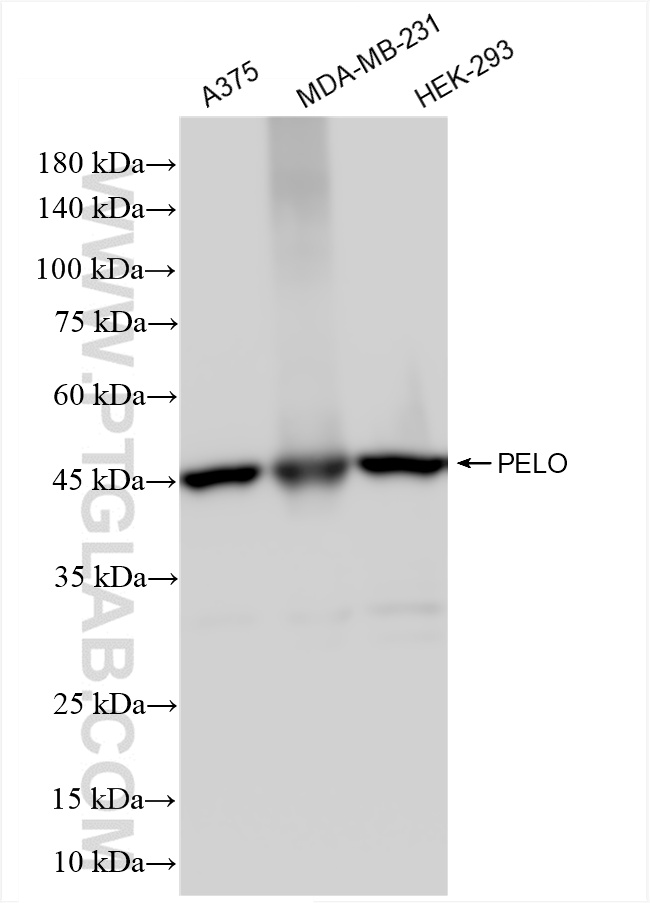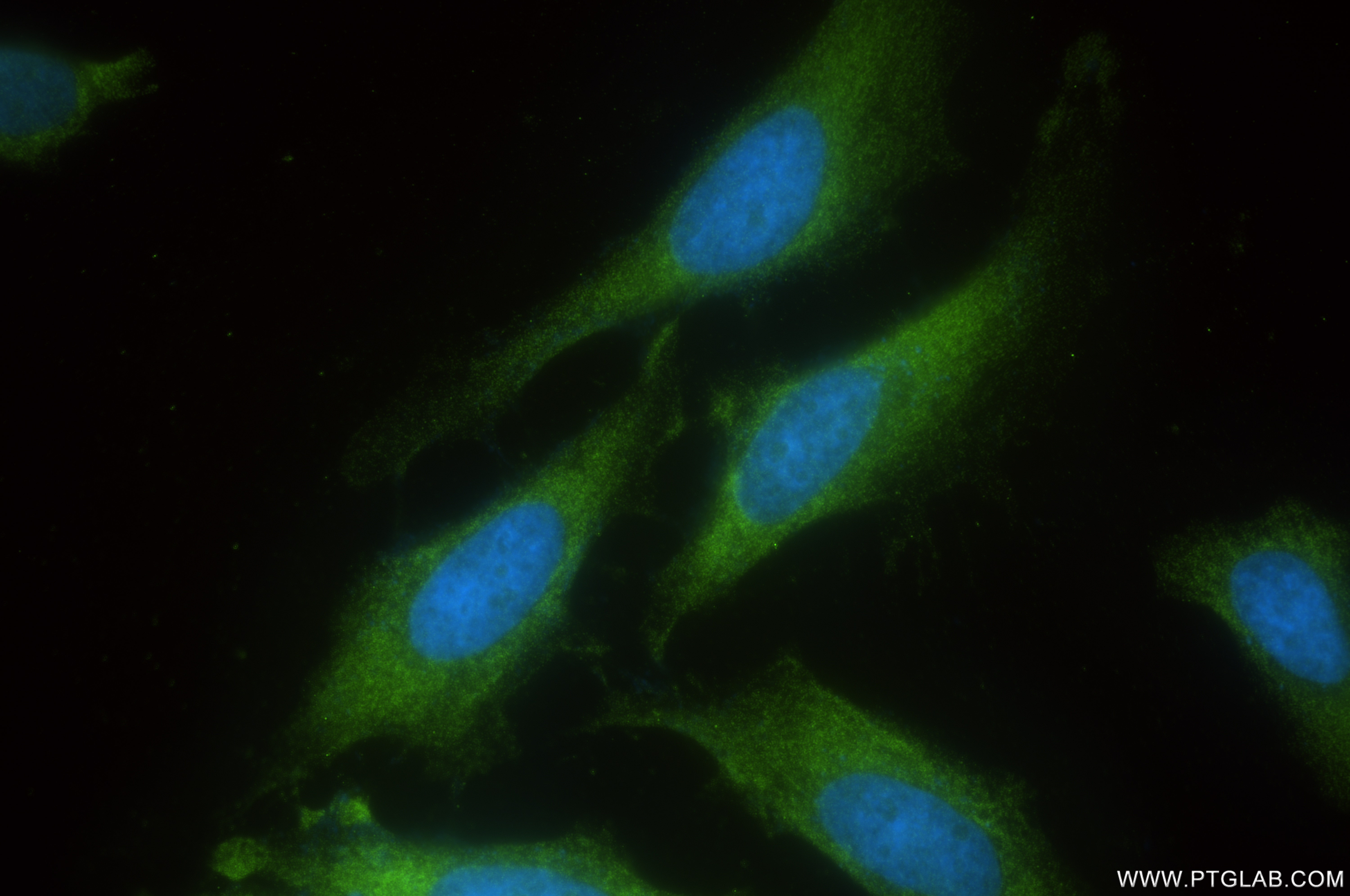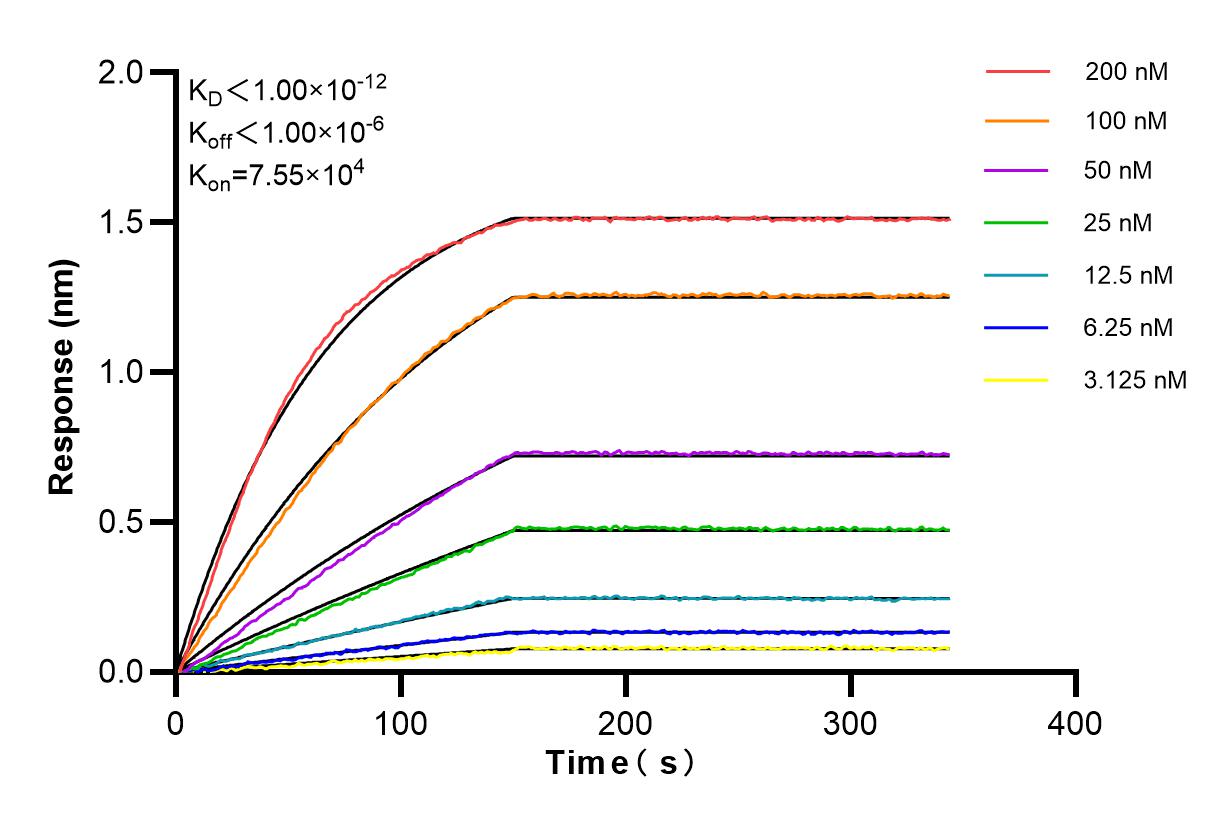验证数据展示
经过测试的应用
| Positive WB detected in | A375 cells, MDA-MB-231 cells, HEK-293 cells |
| Positive IF/ICC detected in | HeLa cells |
推荐稀释比
| 应用 | 推荐稀释比 |
|---|---|
| Western Blot (WB) | WB : 1:5000-1:50000 |
| Immunofluorescence (IF)/ICC | IF/ICC : 1:200-1:800 |
| It is recommended that this reagent should be titrated in each testing system to obtain optimal results. | |
| Sample-dependent, Check data in validation data gallery. | |
产品信息
85743-1-RR targets PELO in WB, IF/ICC, ELISA applications and shows reactivity with human samples.
| 经测试应用 | WB, IF/ICC, ELISA Application Description |
| 经测试反应性 | human |
| 免疫原 |
CatNo: Ag0873 Product name: Recombinant human PELO protein Source: e coli.-derived, PGEX-4T Tag: GST Domain: 42-384 aa of BC005889 Sequence: STIRKVQTESSTGSVGSNRVRTTLTLCVEAIDFDSQACQLRVKGTNIQENEYVKMGAYHTIELEPNRQFTLAKKQWDSVVLERIEQACDPAWSADVAAVVMQEGLAHICLVTPSMTLTRAKVEVNIPRKRKGNCSQHDRALERFYEQVVQAIQRHIHFDVVKCILVASPGFVREQFCDYMFQQAVKTDNKLLLENRSKFLQVHASSGHKYSLKEALCDPTVASRLSDTKAAGEVKALDDFYKMLQHEPDRAFYGLKQVEKANEAMAIDTLLISDELFRHQDVATRSRYVRLVDSVKENAGTVRIFSSLHVSGEQLSQLTGVAAILRFPVPELSDQEGDSSSEE 种属同源性预测 |
| 宿主/亚型 | Rabbit / IgG |
| 抗体类别 | Recombinant |
| 产品类型 | Antibody |
| 全称 | pelota homolog (Drosophila) |
| 别名 | CGI 17, CGI-17, hPelota, PRO1770, Protein Dom34 homolog |
| 计算分子量 | 43 kDa |
| 观测分子量 | 43-45 kDa |
| GenBank蛋白编号 | BC005889 |
| 基因名称 | PELO |
| Gene ID (NCBI) | 53918 |
| 偶联类型 | Unconjugated |
| 形式 | Liquid |
| 纯化方式 | Protein A purification |
| UNIPROT ID | Q9BRX2 |
| 储存缓冲液 | PBS with 0.02% sodium azide and 50% glycerol, pH 7.3. |
| 储存条件 | Store at -20°C. Stable for one year after shipment. Aliquoting is unnecessary for -20oC storage. |
背景介绍
The Pelo gene was originally identified in a mutagenesis screen for spermatogenesis-specific genes of Drosophila melanogaster. The PELO is required for the meiotic division during the G2/M transition, and functions in recognizing stalled ribosomes and triggering endonucleolytic cleavage of the mRNA, a mechanism to release non-functional ribosomes and degrade damaged mRNAs [PMID:12556505]. It may participate in the machinery of protein synthesis or in the regulation of mRNA translation [PMID:9584085].
实验方案
| Product Specific Protocols | |
|---|---|
| IF protocol for PELO antibody 85743-1-RR | Download protocol |
| WB protocol for PELO antibody 85743-1-RR | Download protocol |
| Standard Protocols | |
|---|---|
| Click here to view our Standard Protocols |




